Important benefits of digital transformation
While talking about digital transformation, it’s important to mention the advantages of including various innovations in the digital strategy, such as Robotic Process Automation, Artificial Intelligence or Machine Learning. Such technologies are fundamental on the way to making companies more digitally skilled and operationally swift. 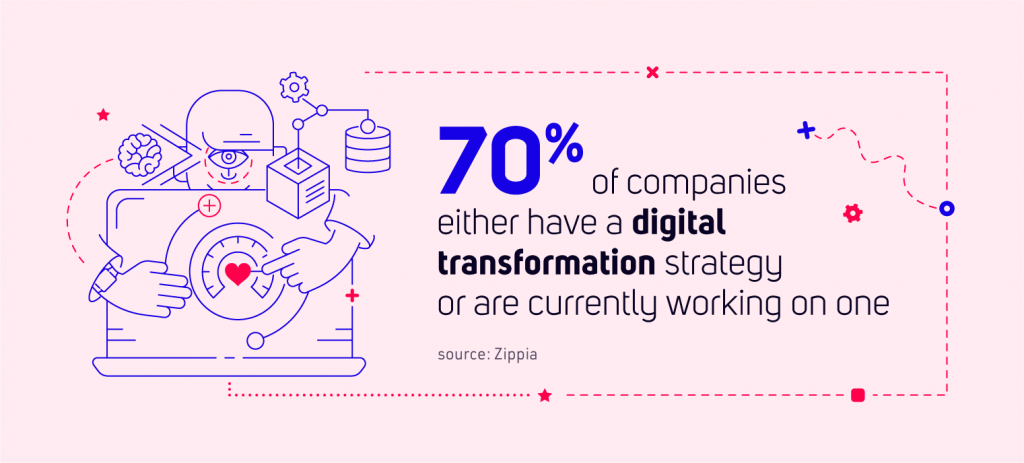
Focusing on the customer and their excellent experience in the digital space is our mission. We look at customers’ needs and offer solutions that make them feel welcome and special at every stage of their interaction with a bank, insurance company or telecommunications company – any company that wants to deliver the highest quality of digital services to its customers. It happens thanks to the implementation of a well-thought-out sales process in which the tools we offer at the moment expected by the customer complement the competence of people, which, based on a positive customer experience, allows to achieve better results, increase engagement and loyalty levels. Wojtek Telenga
EXECUTIVE PARTNER, DIGITAL TRANSFORMATION AT TUATARA
One of the drivers for companies to become more digital is cost-related. Operating in cloud environments, for example, significantly lowers operational costs. Also, process automation allows employees to focus on the most important tasks that require their concentration. But the main benefit lies somewhere else. It makes companies more user-centric and allows them to connect the dots on the customer journey to make it as easy as ever.
One of the biggest advantages of adopting AI and AI-based automation in digital transformation processes is the possibility to really improve the whole customer journey while keeping costs in check and without increasing the overall workload in the company. By using these technologies to improve the customer experience, we are able to significantly drive customer loyalty and retention, which is crucial for long-term business success. Michał Żuchowski
HEAD OF SERVICES AT TUATARA
One way that AI and automation can enhance the customer journey is through the use of chatbots and other automated customer service tools. These can provide quick and accurate responses to customer inquiries, allowing for a more seamless and convenient experience. In addition, it’s also a great way to personalize the customer journey by analyzing data and behavior to deliver personalized recommendations and offers. This can create a more relevant experience for customers, increasing the chances that they will return to do business with us again in the future. In TUATARA, we encourage our partners to think about creating those enchanting experiences at the very beginning of each project.
Digital channels strategy and development
Each company needs a comprehensive strategy, especially while trying to succeed in digital transformation. Planning the company’s visibility in each digital channel is essential. In doing so, companies need to dedicate enough resources to stay competitive. 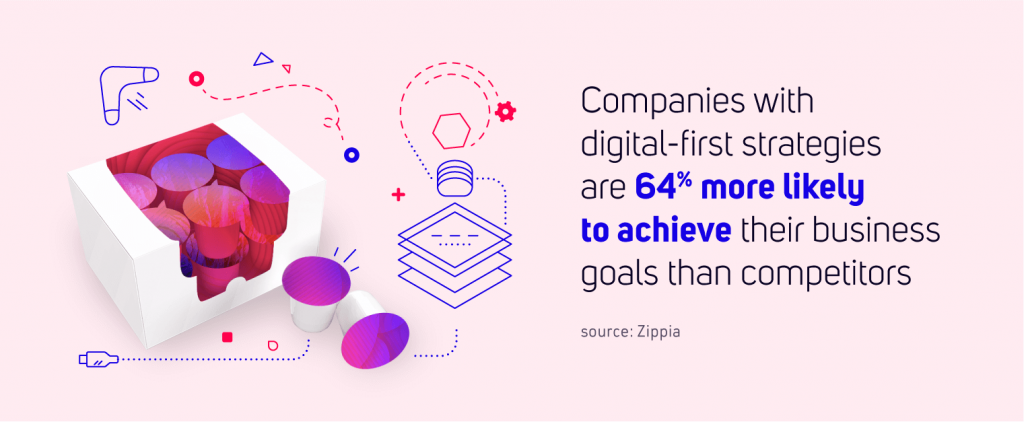
To ensure companies get the most value out of digital marketing efforts, marketers need to develop a digital channel strategy to know where and how to reach the target audience. They also plan how to allocate resources to stay within budget and get maximum results.
Companies can become more profitable by combining competitive analysis, comprehensive marketing strategy, and resource allocation framework. The successful strategy puts effort into effective budget management, proper task allocation within the teams, and successful content distribution via digital channels.
With the right digital channels strategy and development, companies can:
- Understand how to use different digital channels effectively
- Focus on developing marketing channels with the most valuable audience
- Improve valuable channel management on a daily basis
- Discover the perfect tools to improve customer experience
- Adopt a multichannel strategy to achieve a competitive advantage
- Use different distribution channels adjusted to specific customer needs
- Ensure customer data security in various digital channels.
TUATARA can help your company plan and execute a successful digital channels strategy. Our experienced team understands the needs of the chosen target audience, knows how to reach them, and helps you achieve the best business results.
Here are some examples of how we helped companies with successful digital channel strategy and development:
- Online onboarding of Omantel’s customers,
- Real-time marketing platform for Omantel,
- Innovative system for car leasing,
- Actionbot’s case studies.
Digital products creation
When thinking about the digital transformation of products and services, it’s important to know that there might be some challenges ahead. It’s not just about selling something in different channels; companies must create a digital strategy for it. The main goal is to launch a user-friendly, innovative product that enhances the whole customer experience.
In TUATARA, we’ve created a portfolio of innovation-driven products to help companies thrive in the digital transformation era. Let us introduce them.
- Actionbot
Our conversational AI chatbot focuses on exquisite customer experience. Thanks to AI and NLP algorithms, it can foresee customers’ actions within any digital channel and react accordingly. Equipped with IBM Watson Engine, our digital assistant can understand all types of data, learn from users’ actions, and understand the context of each message, which makes the whole conversation go smoothly. Actionbot carries many integration possibilities, for example, with selected applications, websites, or the company’s CRM, and can operate within the selected environment. Also, its cross and up-selling features guarantee the best possible digital e-commerce experience.
Learn more about Actionbot’s successful implementations for telecoms, insurance companies, public sectors, and many others in our case studies.
- Fintin
Our innovative financing platform helps leasing companies, insurance firms, car dealers, and other businesses adjust financing to their customers’ individual needs. This comprehensive platform contains fully-customizable tools for end-to-end financing offerings. It’s an agile and secure solution that complies with privacy regulations. It can be implemented on-premise, hybrid, or in the cloud.
- TASIL
Our real-time Big Data platform lets companies monetize behavioral, transactional, or location customer data. It is a complete and ready-to-market product that can be used for secure data monetization. It’s a perfect solution for companies that collect vast amounts of data, such as banks, insurers, telecommunication operators, or retailers.
- Retixa
Our real-time communication platform with advanced analytics and dynamic user profiles allows for analyzing huge amounts of data. It’s an engine on which TASIL was built. It integrates all data sources, such as location, SMS and MMS history, user profile, mobile app data, or social media channels. Also, it supports the highest privacy standards in line with GDPR.
- SensID
Our platform for automated GDPR-compliant data management created by 4Semantics. With the help of Machine Learning and Natural Learning Technology, the platform enables the detection, analysis, classification, cataloging, and protection of personal and sensitive data. It supports and integrates with all types of structured and unstructured data, such as documents, files, or corporate emails.
- SensID Cognitive Automation
The other version of the previous platform, also by 4Semantics, uses NLP technology to automate document comprehension processes and textual data analysis. It also stores information in separate documents and uses it as structured data in RPA processes or analytics. Also, it helps with information comprehension and understanding data models, which can work with business documentation.
- The Cognitive Hand
Another solution by 4Semantics enables the cognitive automation of documents from various sources. It understands the data from these documents, extracts the needed information, and learns how the user handles individual applications. The gathered knowledge and skills significantly shorten employees’ time spent performing monotonous tasks. Our solution simply gives them a helping hand and does this job for them. The application is ready to use immediately after installation and doesn’t require a long implementation process. Everything is done automatically.
If you want to know more about our digital products, visit this page or read our article.
User interaction design
User interaction design defines the structure of interactive systems to create meaningful relationships between users and the products or services they use. It usually involves elements like general product aesthetics, motion, sound, colors, and many more. And, of course, each of these elements can involve even more specialized fields, like a sound design used in each interaction. User interaction design aims to create products or services that enable users to achieve their objectives in the best way possible. 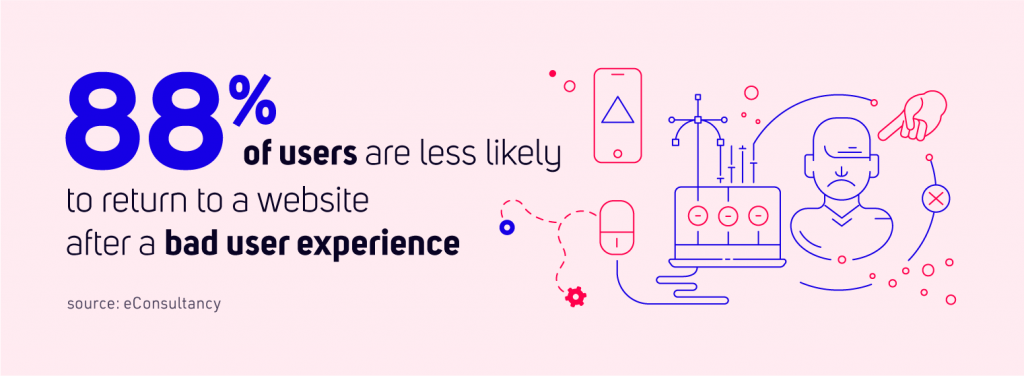
To design meaningful user interactions, companies should focus on:
- Defining multiple possible scenarios of interactions with the product
- Applying solid and clear communication to give necessary information
- Using the right appearance to indicate what behaviors are possible
- Ensuring that the product reacts to users’ actions in a reasonable time
- Simplifying the interface to allow meaningful interaction with a product
- Enabling sending feedback about errors and correcting them quickly
It’s also important to note that how the product is designed influences the user’s response. Everything from font to layout can affect how a user feels, so creating the best possible experience is important, especially in digital transformation. Also, user interaction design can save companies both time and money. For example, it can be more accurate when estimating development time or budget because the design team is focused on eliminating all the unnecessary features.
In TUATARA, we believe designing user interactions is the foundation of a successful product. We are proud to create enchanting experiences in the digital space, with a clear focus on the best possible customer experience.
Here are examples of our interaction designs that understood the users’ needs and reacted accordingly by creating successful solutions:
- Designing a financial platform that serves customers,
- A conversation AI chatbot that innovates customer experience,
- Real-time action during a crisis.
UI/UX design of digital channels
A brand’s narrative is no longer limited to copywriting and picture selection. Nowadays, any customer engagement strategy requires a more personal approach. It’s a real challenge to keep the company’s voice consistent. Thus, the UI/UX design can significantly improve the digital experience by making it more personalized. It can also positively impact digital marketing design strategy by providing a smoother user flow or allowing them to choose various contact options. 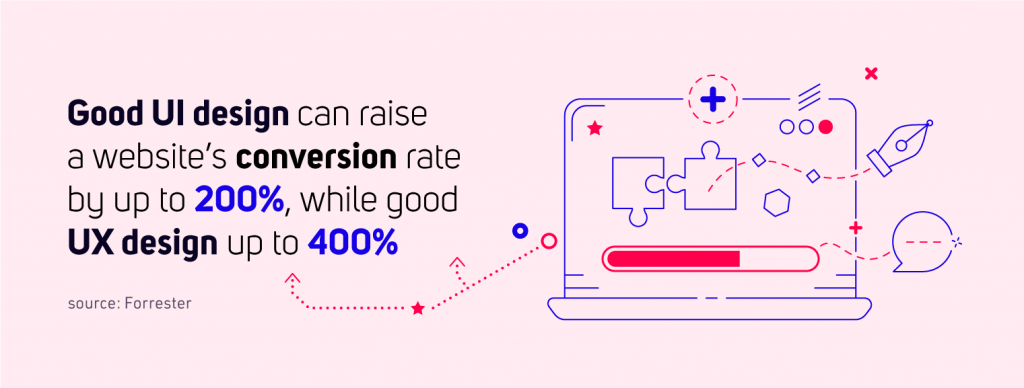
To design a meaningful digital marketing strategy, a proper UI and UX should be used to:
- Create digital channels that engage users – the design can create a seamless experience between the customer and the company.
- Understand users’ needs – the process involves understanding customers’ problems and designing appropriate solutions. UI/UX designers are also responsible for creating user-friendly interfaces that simplify product or service use.
- Identify users’ problems – user-centered design involves understanding the audience, collecting feedback on how users interact with a product, and then iterating products based on these insights.
- Gather users’ feedback to improve strategy – by gathering insights on how customers interact with products and services or what content they need, UI/UX designers can improve the marketing strategy accordingly.
- Design user-friendly and eye-pleasing products – a good design should be easy for users to find and navigate. It’s the first impression that a user gets, and it can determine whether a digital strategy succeeds. A well-planned UI/UX design focuses on creating an intuitive and beautiful layout.
- Deliver the best possible digital experience – the digital experience is a crucial aspect of marketing. It helps customers decide whether to stay with the company or move elsewhere. That’s why companies should ensure a positive and helpful customer experience.
Here are examples of how we plan UI and UX strategy:
Front-end and back-end development and maintenance
The front-end of a website is what the visitors see on the website and can interact with, while the back-end is all the mechanisms that make the website operational and secure. When you combine front-end and back-end website development, it’s commonly referred to as full-stack development. 
The development of both these stacks is especially important. The website’s front-end is the first thing each visitor sees and interacts with. So, the main goal of front-end development is to ensure a truly satisfying user experience. On the other hand, without solid back-end support, even an astonishing front-end can fail. When a website runs slow or crashes, it means that the back-end maintenance goes bad. No wonder it can discourage users from using the website.
The importance of back-end development and maintenance is not to be overlooked, and here are some of the main benefits:
- Ensuring website security – securing a website and its data from security breaches is now more important than ever, so the first goal of back-end maintenance should be ensuring that all the important security patches and software are up-to-date.
- Adding usefulness to the front-end – every website depends on quality back-end coding for smooth functioning, so they should add the utility to all the front-end functionalities (for example, back-end code can record each logging and verifies each attempt against the logins stored in the database).
- Smoothing the information flow –following the example above, back-end stores the login data, obtains the needed information from the database, and directs it to the user while wanting to log in; thus, it facilitates the whole information transfer.
- Improving user digital experience – the majority of functionalities are set up and controlled from the back-end, so its code quality greatly impacts the website’s usability (for example, slow website loading, crashes, or errors).
Similarly, front-end development and maintenance also brings a lot of benefits, such as:
- Optimizing navigation within a website by making it easier for visitors to find what they are looking for with a carefully planned UI.
- Improving website performance by optimizing the website so it loads faster and, in turn, leads to higher customer engagement, retention, and conversion rate.
- Communicating business goals clearly by ensuring that the website reflects the company’s main purpose, for example, in the copy of the welcoming message.
In TUATARA, we’ve understood the importance of front-end and back-end development as much as their maintenance. In digital transformation, it’s even more important than ever to have a useful website that ensures the company’s success. So, here are examples of successful front-end and back-end development of our products:
- Designing a financial platform that serves customers,
- Designing a chatbot with the IBM Watson engine.
Marketing automation
Marketing automation uses software to automate repetitive tasks, such as email marketing, managing social media channels, or running ad campaigns. It does that by putting data to work by streamlining workflows. The marketing automation strategies should be deployed across the whole customer lifecycle because they can sustain long-term and fruitful relationships with customers. 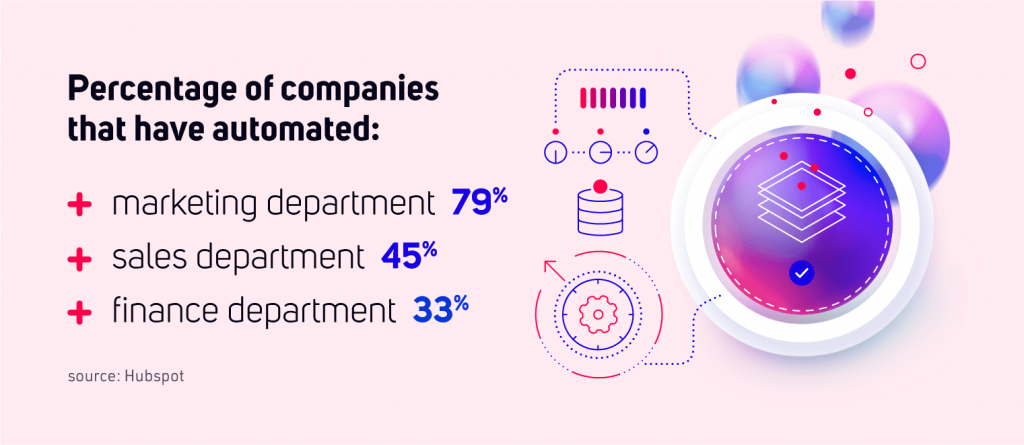
Automating marketing tasks can deliver many benefits, both for businesses and the customers, such as:
- Personalized workflows – marketing automation software can help companies use data from multiple channels to understand their customers’ needs deeply. With such information, they can deliver the right content at the right time, driving prospects to the end of a marketing funnel. Also, it can help continuously engage customers with personalized workflows and create long-term relationships.
- Streamlined processes – with effective marketing automation, there’s no need for complicated procedures because everything is automatically saved and stored. Thanks to that, internal workflows can help companies prioritize tasks.
- Prioritizing more relevant content – thanks to marketing automation, companies can decide what each customer sees, from ads to email marketing. With the help of creating buyer’s personas and behavioral targeting, the whole communication can be even more adjusted to the specific needs.
- Providing better and faster answers – thanks to prioritizing tasks, companies can manage leads and answer each query faster. Also, with the behavioral data stored in their databases, the assistance can be more relevant and personalized based on an analysis of each customer’s history with the company.
- Offering seamless and omnichannel experience – marketing automation allows for collecting, storing, and using data to offer customers a personal experience. Thanks to that, each customer feels really special and is truly satisfied with the company.
In TUATARA, we design solutions that improve customer experience in various ways. Automating processes in marketing has been one of our core tasks since the beginning. Here are a few examples of our experience in marketing automation:



